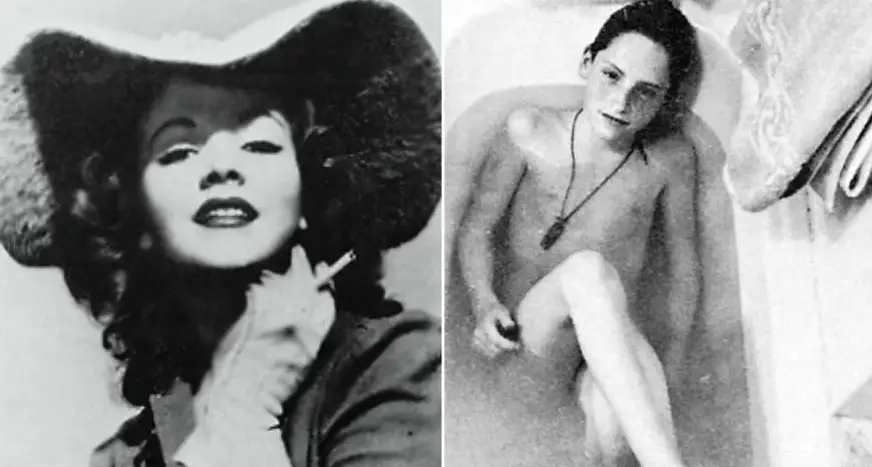Evolution of Pablo Picasso’s Self-Portraits: Age 15 to Age 90

Pablo Picasso, the iconic Spanish artist, is renowned for his revolutionary contributions to modern art.
His prolific career spanned over seven decades, during which he continually pushed the boundaries of artistic expression.
One aspect of Picasso’s work that particularly captivates art enthusiasts is his self-portraits.
These introspective depictions offer a unique window into the evolution of Picasso’s style and psyche.
The Early Years: Formative Influences
Picasso’s early self-portraits provide glimpses into his formative years as an artist.
Born in 1881 in Málaga, Spain, Picasso demonstrated prodigious talent from a young age.
His father, an art teacher, recognized his son’s potential and provided early artistic training.
Influenced by the works of Spanish masters such as Diego Velázquez and Francisco Goya, as well as French artists like Paul Cézanne and Henri Toulouse-Lautrec, Picasso began to develop his distinctive style.
15 years old (1896)
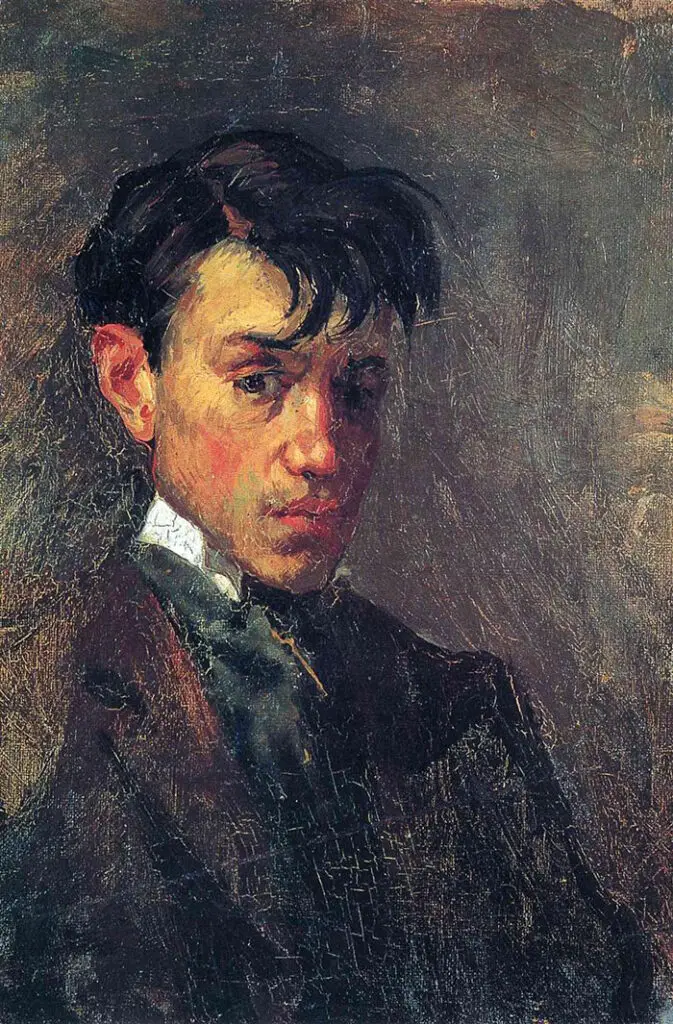
18 years old (1900)
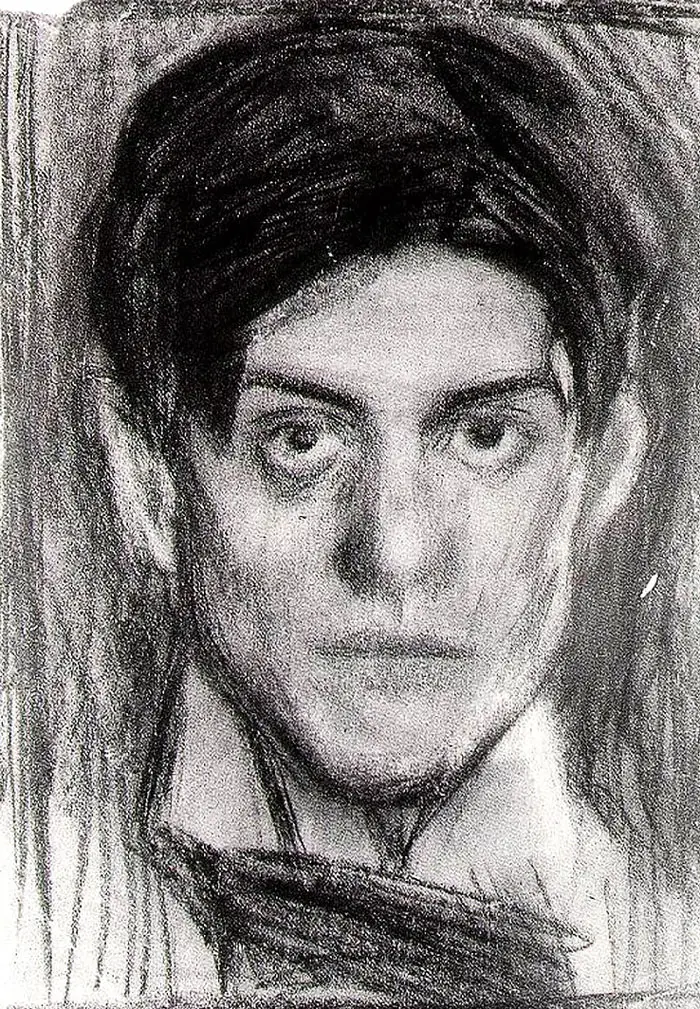
What motivated Picasso to paint self-portraits?
Picasso’s self-portraits served as a means of self-exploration and artistic experimentation.
By depicting himself, he could scrutinize his own features and emotions, using himself as both subject and observer.
Additionally, self-portraiture allowed Picasso to assert his identity as an artist and assert his presence within the art world.
20 years old (1901)
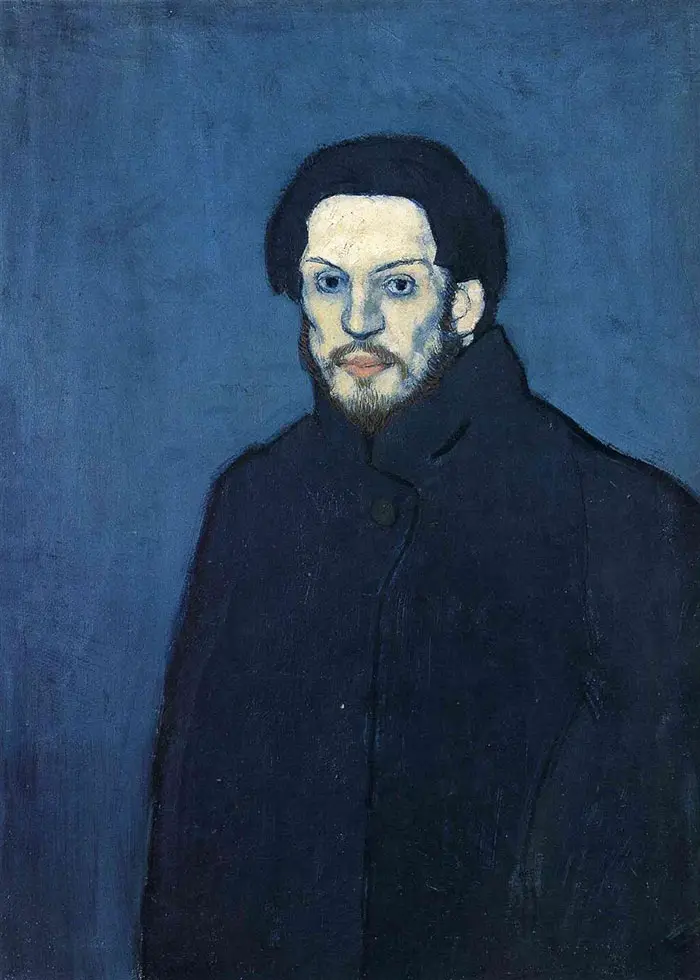
24 years old (1906)
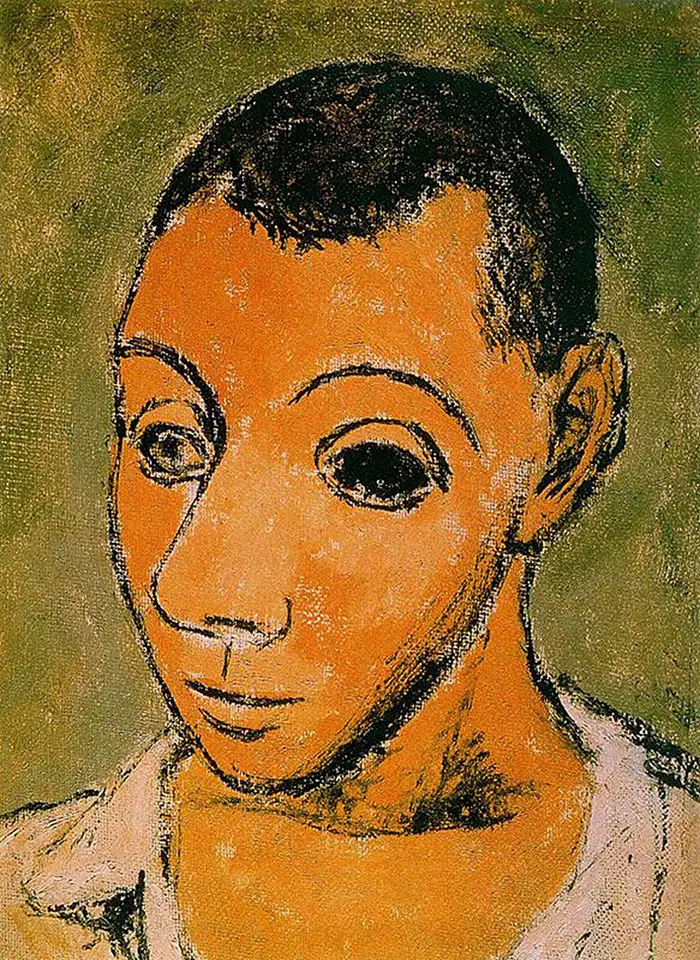
Blue Period: Reflection and Melancholy
During the early 1900s, Picasso entered what is known as his “Blue Period.”
Characterized by a predominance of blue and blue-green hues, this phase of his artistic career reflected themes of melancholy, poverty, and introspection.
Picasso’s self-portraits from this period often depict him with a somber expression, conveying a sense of emotional turmoil.
25 years old (1907)
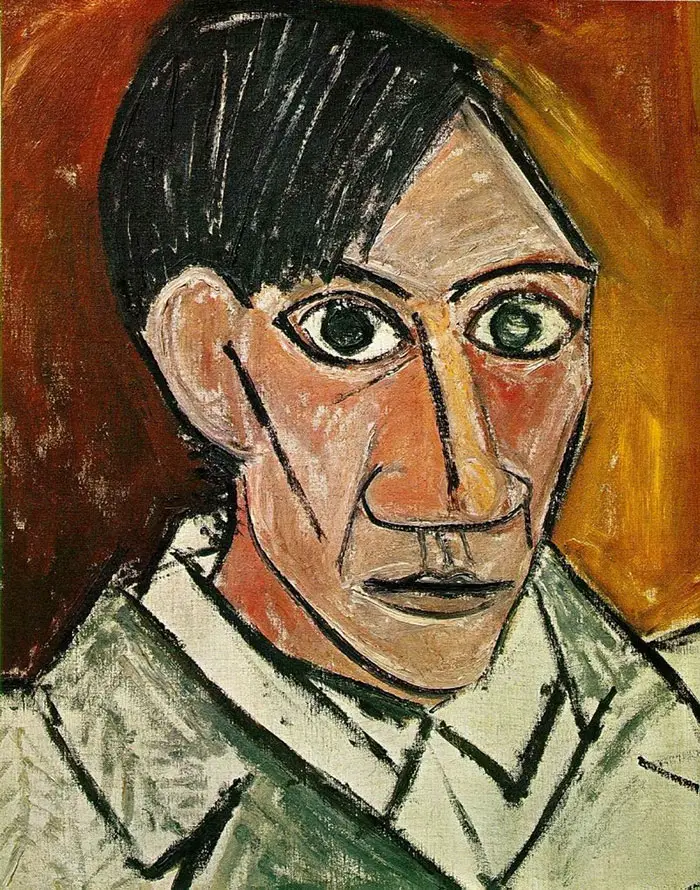
35 years old (1917)

Why did Picasso choose to depict himself with a blue color palette during his Blue Period?
The use of blue tones in Picasso’s self-portraits during his Blue Period can be attributed to several factors.
Firstly, blue was associated with feelings of melancholy and introspection, aligning with the thematic content of his work during this period.
Additionally, Picasso’s use of color was influenced by his personal experiences and emotional state, with blue serving as a symbolic representation of his mood and psychological state.
56 years old (1938)
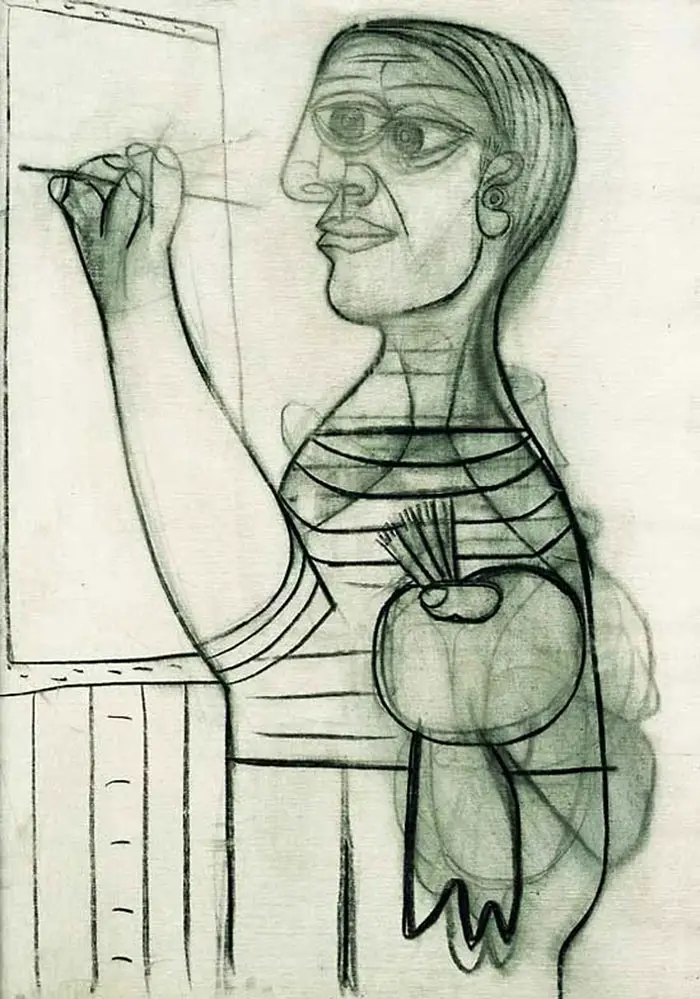
83 years old (1965)
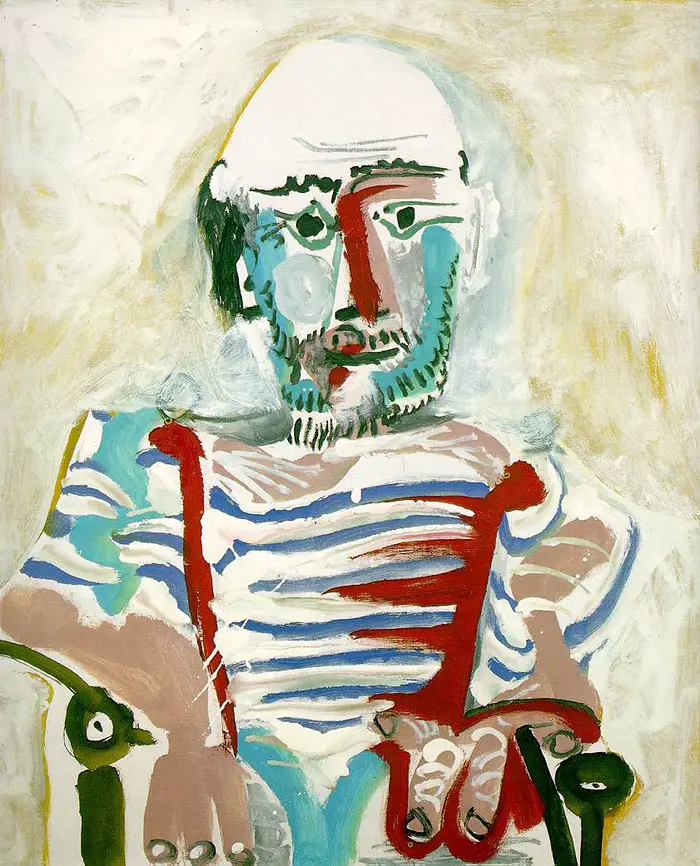
Cubism: Deconstruction and Reconstruction
In the early 20th century, Picasso co-founded the Cubist movement, along with Georges Braque.
Cubism revolutionized the art world by challenging traditional notions of perspective and representation.
Picasso’s self-portraits from this period exemplify the Cubist approach, characterized by the fragmentation and reassembly of form.
85 years old (1966)
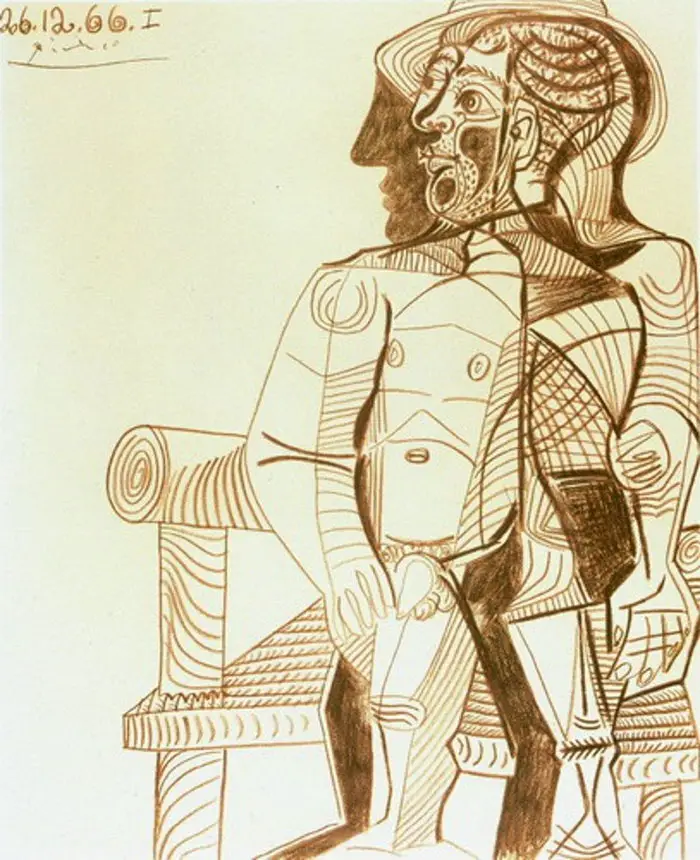
89 years old (1971)
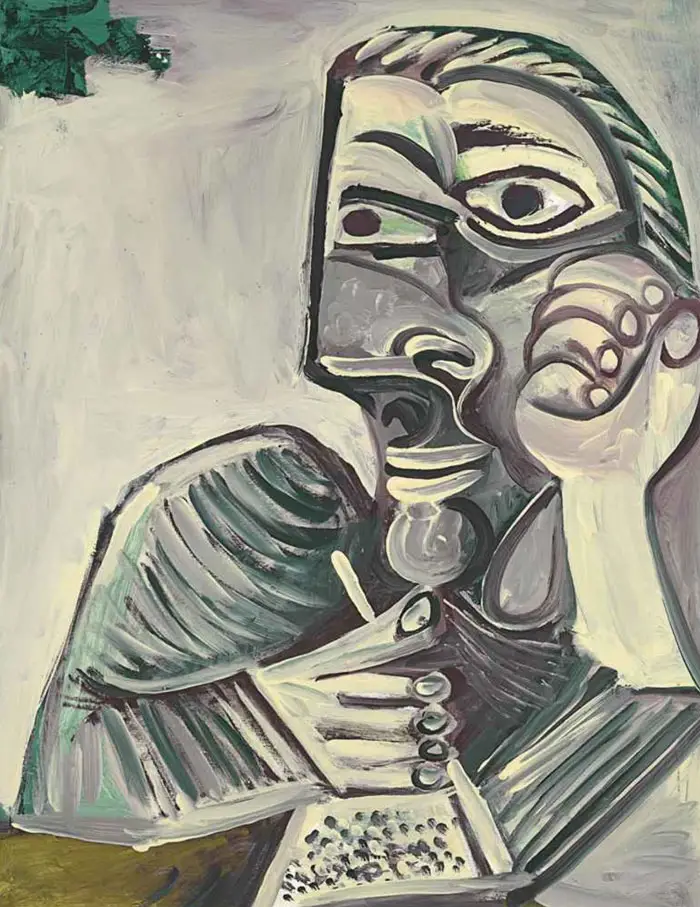
How did Cubism influence Picasso’s approach to self-portraiture?
Cubism provided Picasso with a new framework for exploring the concept of identity and self-representation.
Through the deconstruction and reconstruction of facial features and spatial relationships, Picasso was able to convey the multifaceted nature of human perception and consciousness.
His self-portraits became abstracted reflections of inner reality, inviting viewers to engage with the complexities of selfhood.
90 years old (June 28, 1972)
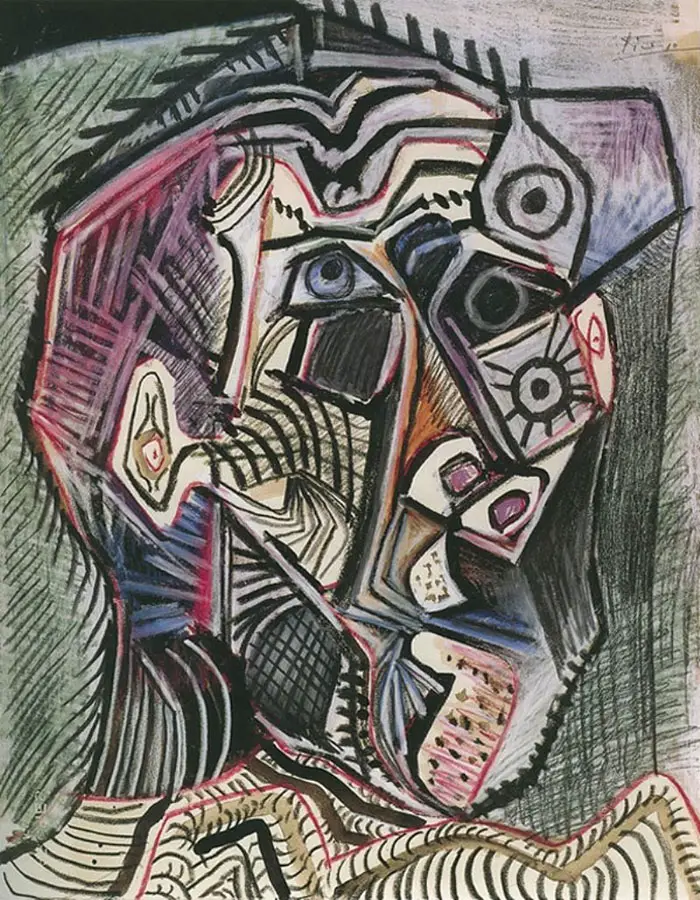
90 years old (June 30, 1972)
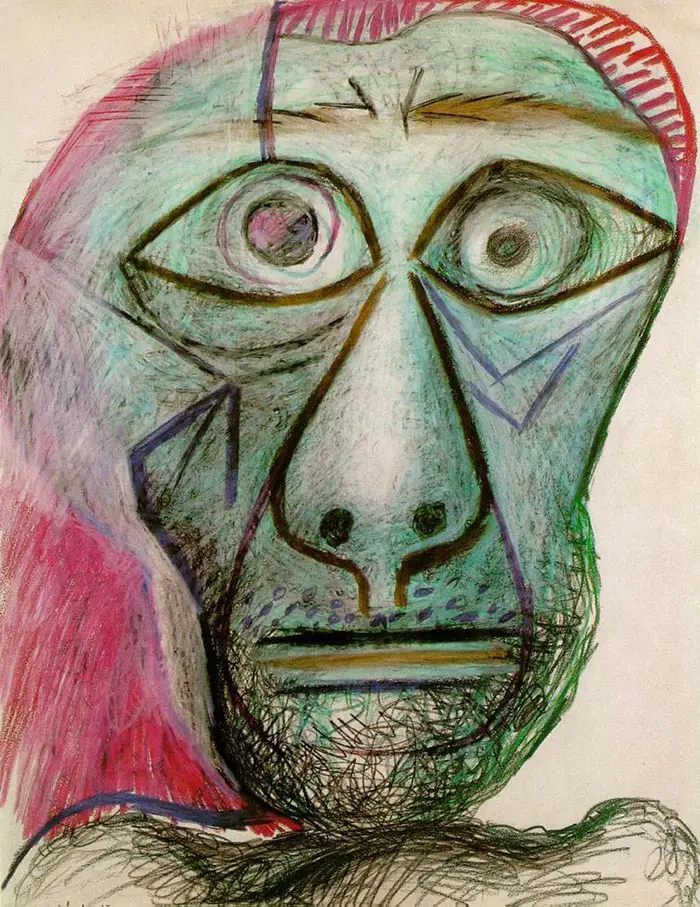
Later Years: Experimentation and Innovation
As Picasso continued to evolve as an artist, his self-portraits underwent further transformation.
In his later years, he embraced a diverse range of styles and techniques, from classical realism to bold abstraction.
Picasso’s self-portraits from this period are characterized by a sense of vitality and experimentation, reflecting his insatiable curiosity and relentless drive for artistic innovation.
90 years old (July 2, 1972)
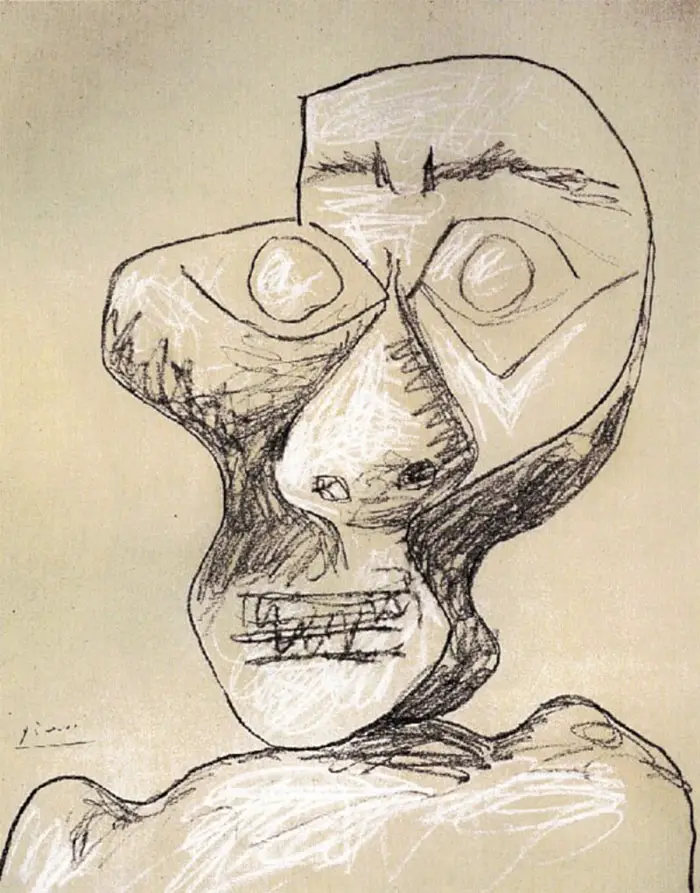
90 years old (July 3, 1972)
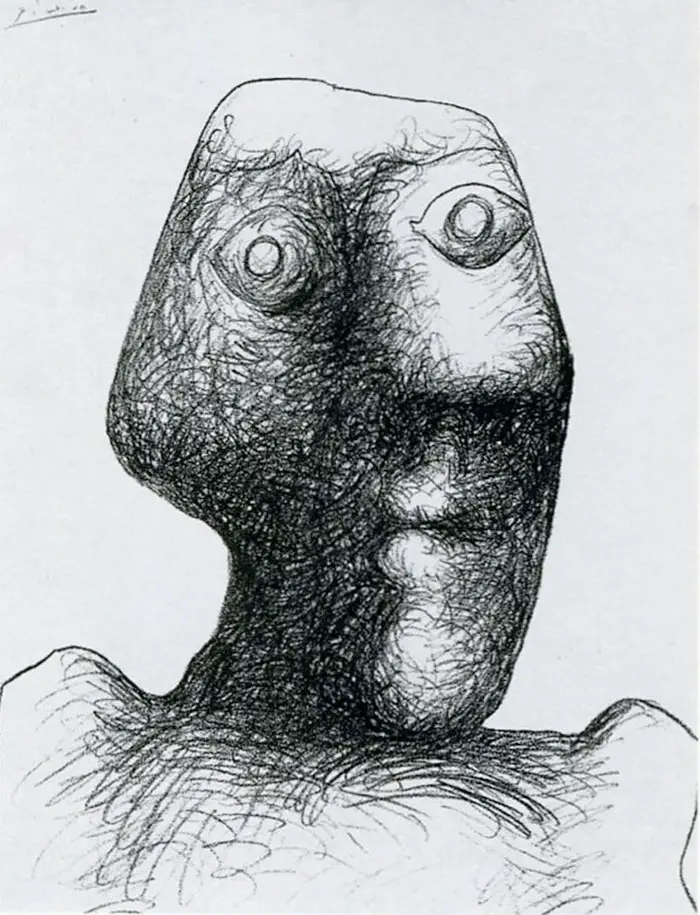
How did Picasso’s later self-portraits reflect his changing artistic priorities?
In his later self-portraits, Picasso demonstrated a willingness to push the boundaries of conventional representation and explore new avenues of artistic expression.
His eclectic approach to self-portraiture mirrored his broader artistic philosophy, which prioritized spontaneity, intuition, and creative freedom.
By embracing a diverse range of styles and techniques, Picasso continued to challenge the conventions of portraiture and redefine the boundaries of artistic possibility.
Picasso’s paintings, however, began to lose their realism after 1897.
“Why should I create things that make sense in today’s world?” Picasso once asked.
“Painting like Raphael took me four years, but painting like a child took a lifetime.” – Pablo Picasso
Through his self-portraits, Pablo Picasso invites us to journey alongside him as he navigates the complexities of identity, emotion, and artistic vision.
From the somber introspection of his Blue Period to the revolutionary experimentation of Cubism and beyond, Picasso’s self-portraits offer a compelling narrative of artistic evolution.
How many self-portraits did Picasso create?
Picasso created over 50 self-portraits throughout his career, spanning various styles and periods.
Did Picasso always paint self-portraits?
While self-portraiture was a recurring theme in Picasso’s work, he also explored a wide range of subjects and genres, including still life, landscape, and abstraction.
Where can I see Picasso’s self-portraits?
Picasso’s self-portraits are housed in museums and private collections around the world, including the Museum of Modern Art in New York City, the Tate Modern in London, and the Musée Picasso in Paris.

